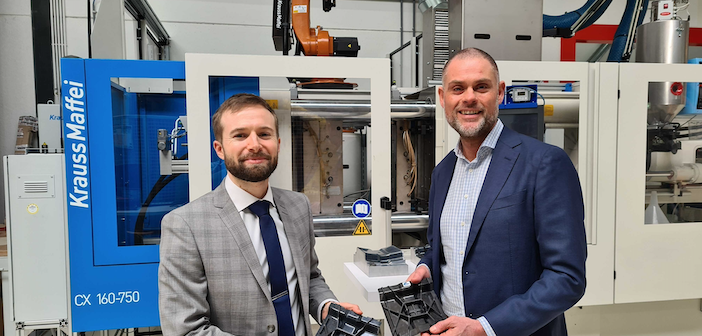Safran joins the ThermoPlastic composites Research Center

Safran has joined the ThermoPlastic composites Research Center (TPRC), a research development and innovation centre for thermoplastic composite technology. TPRC focuses on enabling the use of this technology in large-volume applications and on promoting the widespread adoption of these lightweight materials through fundamental knowledge development.
Such initiatives are important as the aerospace industry has committed to achieving carbon-free aviation by 2050 for the entire fleet. This goal of ‘carbon neutrality’ refers to a situation where air transportation releases, along with other human activities, no more CO2 emissions than the planet can absorb.
Work on composite materials has already led to lighter structures in LEAP engines and has decreased fuel consumption by a claimed 15% from that of the CFM-56 engines. As part of the RISE programme, Safran intends to reduce fuel consumption by more than 20%, as well as CO2 emissions from future propulsion units. The use of thermoplastic matrix composites should expand the areas of application for composites and reduce the mass of assemblies, by working on welding.
The use of thermoplastic resins enables the recycling of material scraps and end-of-life parts, which will reduce the carbon footprint of the Safran group’s product manufacturing. Joining TPRC is part of this initiative and should allow the group to strengthen its theoretical and application knowledge of these materials.
“Joining the TPRC will create synergies and accelerate Safran’s composite technology development. Safran has had extensive and fruitful experience with composite materials. Indeed, many composite parts based majorly on thermosets resins are already in production. The LEAP engine’s 3d-woven fan blades are perfect examples of Safran’s spearhead position on these composite technologies. However, the R&T effort on the composites material is still a very high priority on the “decarbonation strategy” of Safran. Developing thermoplastic-based composites and related technologies offers new opportunities to reach Safran’s targets and is already a part of our Composites roadmap with existing maturation works,” stated Jean-Pierre Poitevin, director of Safran Composites.
Sebastiaan Wijskamp, technical director of the TPRC added, “Safran has been a valuable partner of the TPRC since they specifically joined the COMPeTE project on overmoulding of thermoplastic composites in 2015. With Safran now becoming a full member of the TPRC, we can jointly work on all topics of our research roadmap, amongst which fibre placement, out-of-autoclave processing, welding, stamp forming and recycling. The TPRC consortium is becoming stronger with the participation of Safran, and together we hope to meet the current need for lightweight design for more sustainable transportation in the future.”
